Going for Green: How greening Portsmouth can make us all safer, healthier and happier
This article contains affiliate links. We may earn a small commission on items purchased through this article, but that does not affect our editorial judgement.
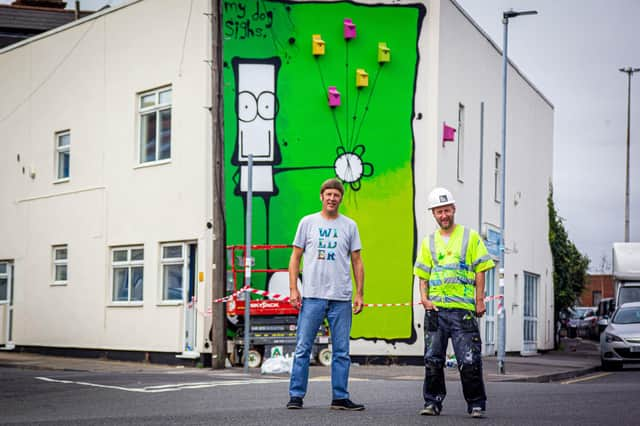

In their most recent report, the Intergovernmental Panel on Climate Change ruled with 95 per cent certainty that humans are the main reason for global warming.
So a lot of the potential solutions to this involve a change in behaviour.
Advertisement
Hide AdAdvertisement
Hide AdBut there are ways people can work with nature to reduce and possibly reverse some of the effects.
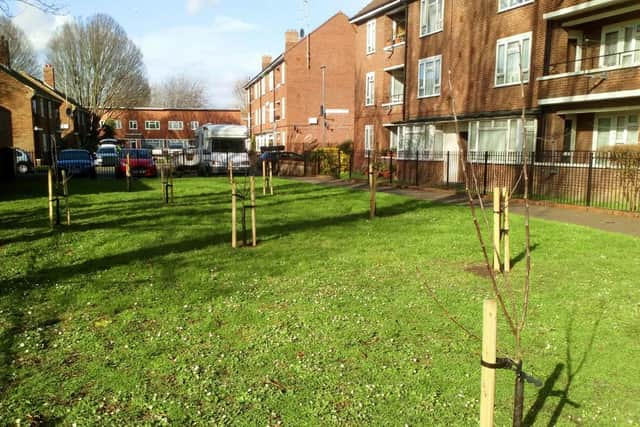

Greenery is a very important tool for both adapting to extreme weather and slowing down climate change by absorbing carbon.
Studies have found that having plants, hedges and trees in streets can reduce levels of nitrogen dioxide by 40 per cent and particulate matter by 60 per cent.
Researchers found asthma rates among children aged four and five fell by a quarter for every additional 343 trees per square kilometre.
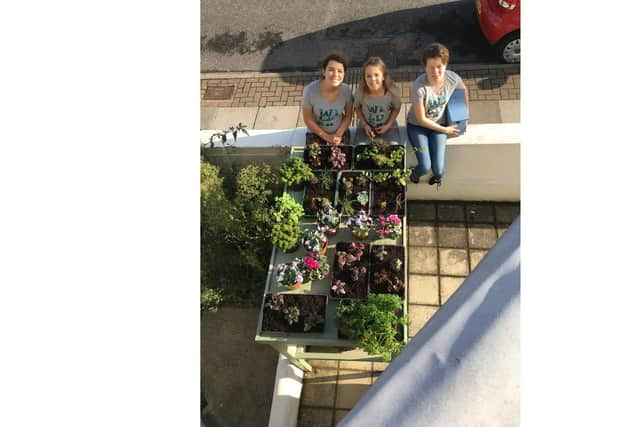

Advertisement
Hide AdAdvertisement
Hide AdAnd there are more benefits to greenery than just fighting climate change and improving air quality.
Parks and green spaces are known to assist in improving child development, including better dexterity and coordination, and the opportunity to build social connections and relationships.
Evidence shows that people who live close to and use green spaces tend to exercise more.
They also have a reduced risk of Type 2 diabetes, cardiovascular disease, obesity, premature death, and preterm birth.
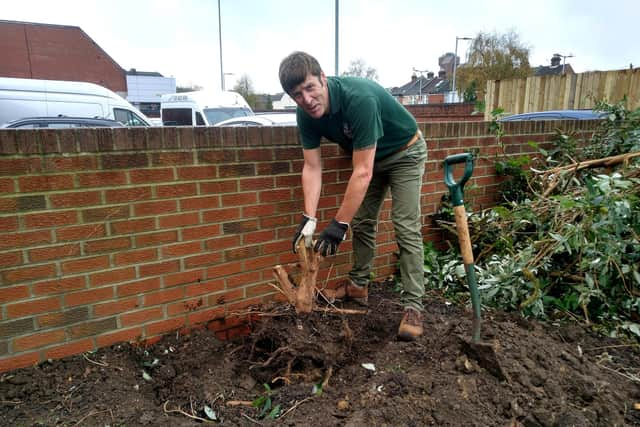

Advertisement
Hide AdAdvertisement
Hide AdWildlife such as birds, bugs and bats need greenery to survive and these creatures provide incalculable benefits to human health and wellbeing such as pollinating our crops.
And active travel is improved by creating safe green corridors that encourage people to walk or cycle to work.
This is why the Portsmouth Climate Action Board is urging us all to think about how we can make the city a greener place.
Board member Nick Sebley said: ‘The climate emergency means hotter and longer heatwaves in the summer but also more bursts of intense rain throughout the year.
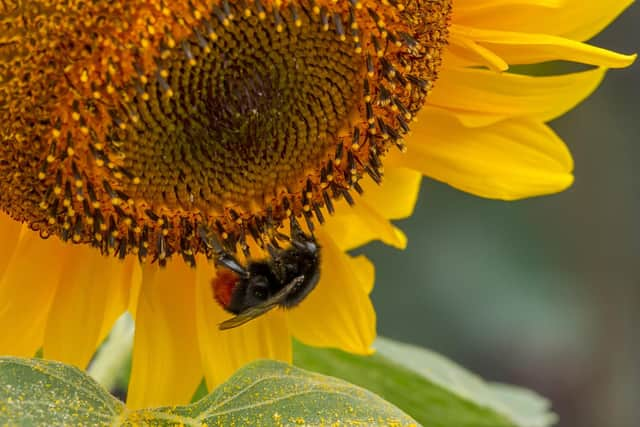

Advertisement
Hide AdAdvertisement
Hide Ad‘Unfortunately concrete and tarmac make both scenarios worse: they absorb the sun’s heat during the day then radiate it from dusk onwards meaning we can’t get respite from a heatwave even at night; they also stop heavy rainfall being absorbed into the soil, which can lead to flash flooding.
‘Luckily greenery and trees have the opposite effect: the leaves of a tree or plant act like tiny air conditioners, releasing moisture to cool the air as well as providing shade for residents, buildings and roads.
‘The less the built environment absorbs heat during the day the less it gives off at night.
‘Shelter from trees can reduce energy costs– research suggests a per tree saving in carbon emissions as a result of reduced building energy use of around 10-11kg per year.
Advertisement
Hide AdAdvertisement
Hide Ad‘Greenery can also intercept and soak up heavy rainfall, reducing the likelihood of surface flooding.
‘The second, very important, function of greenery is that it takes carbon dioxide out of the air and stores it.
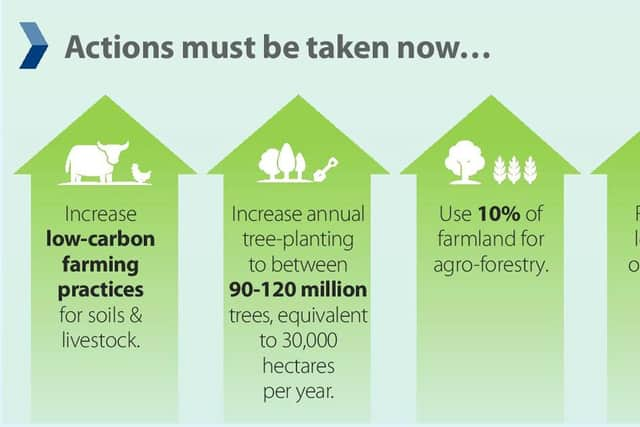

‘The more trees, hedges, and greenery we plant the more tonnes of CO2 they take out the air, which slows down the rate of global heating and buys us time to resolve more difficult challenges: like replacing all gas boilers in our homes or working out how to power cargo ships without using diesel.’
According to the city council there are around 86,000 trees in Portsmouth, which amounts to 9.8 per cent canopy cover.
Advertisement
Hide AdAdvertisement
Hide AdBut this is a lower proportion of canopy cover than other comparative cities such as Southampton, Plymouth and London.
And it’s lower than the average tree canopy cover, measured across 283 towns and cities in England, at16 per cent.
Figures from the Office for National Statistics revealed 86 per cent of homes in the city have access to a garden, placing it as 312th out of 370 council areas in Great Britain.
They also showed private gardens in Portsmouth were significantly smaller than elsewhere with an average space of 117.9 metres squared, compared to the national average of 332.7 metres squared.
Advertisement
Hide AdAdvertisement
Hide AdRod Bailey, from Portsmouth Climate Alliance, has concerns about the lack of green space in the city.
He said: ‘It means that we face adverse health conditions, as we all know the benefits of having trees and open spaces.
‘When we think about the pandemic the big story is we are suffering mental stress but on of the things is we haven’t got enough open spaces to help us relieve this.
‘I live by Milton Common and that has been great during lockdown but lots of people don’t have close access to an open space like that.
‘We have a great need for open spaces and greenery.’
Advertisement
Hide AdAdvertisement
Hide AdSome steps are being taken by the local authority, as well as community groups to change this.
Most recently the city council planted 1,851 native tree saplings at the junction of Lake Road and Kingston Road in Landport, and also along Lake Road itself - to create what they are calling a ‘tiny forest’.
In addition to the small neighbourhood groves, 330 larger trees have been planted across the Buckland housing estate, and 1,199 other plants and shrubs in Estella Road, Grafton Street and raised planters at Hale Court.
Councillor Darren Sanders, the council’s housing boss, said: ‘Living in the city it's not always possible for residents to have a deep connection with nature.
Advertisement
Hide AdAdvertisement
Hide Ad‘Small neighbourhood forests will allow us all to enjoy more greenery, spot wildlife, and even get involved in the project if we want.
‘These plans will certainly help the council reach our goal of being the first carbon-neutral city.’
To learn more or volunteer in future you can email [email protected]
Other trees have grown from wasteland with some encouragement.
Advertisement
Hide AdAdvertisement
Hide AdIn 2016 the Cornwallis Crescent Community Orchard was established in Buckland.
The half acre plot of land was a wasteland until it was brought to life as a community garden.
The orchard now hosts about 40 different kinds of trees, including apples, pears, plums, pomegranates, mulberry and cherry, as well as soft fruit bushes such kiwi, golden raspberries, strawberries, gooseberries and blackberries, all of which are shared with the local community.
Children are encouraged to come and pick for themselves, and any excess produce is passed on to community cafes, and organisations like Foodcycle.
Advertisement
Hide AdAdvertisement
Hide AdThe project currently involves about 100 volunteers and also offers educational opportunities with local schools.
Another example of community led projects is the bid to transform Francis Avenue in Southsea into a ‘wild street’.
Under the scheme people are encouraged to grow plants in their forecourts to help insects and birds thrive, as well as to brighten up the road.
Street resident Laura Mellor said: ‘The Francis Avenue wild street is thriving. We’re hearing and seeing a lot more birds, particularly goldfinches and sparrows. Bird feeders in people’s gardens have made a big difference.
Advertisement
Hide AdAdvertisement
Hide Ad‘Looking ahead, we’re planning to get our plant swap station going again very soon. Efforts have also spread to a nearby street.
‘We were delighted when local artist My Dog Sighs created a Wilder Portsmouth artwork here last year.
‘It’s a great way to show that we are serious about bringing nature back.
‘The wild street has been a brilliant way for us residents to connect with each other during the last year. I’d encourage anyone who is interested to give it a go on their street.
Advertisement
Hide AdAdvertisement
Hide Ad‘The feedback here has been overwhelmingly positive and it’s amazing how many conversations start up from being outside your front door watering the flowers.’
But greening Portsmouth doesn’t just mean planting more trees and plants - existing wildlife and habitats we have need protecting.
In terms of wildlife, 2,393 species have been recorded in the Portsmouth area, including bottlenose dolphins and seahorses in the Solent, a colony of grey seals in Langstone Harbour, kingfishers and hares at Hilsea lines, and many types of bat on Southsea Common.
There are also three sites of scientific interest at Langstone Harbour, Portsmouth Harbour and Portsdown Hill and seven additional protected wildlife areas across the city.
Advertisement
Hide AdAdvertisement
Hide AdAndy Ames, a Portsmouth wilder communities project officer, at the Hampshire and Isle of Wight Wildlife Trust, said: ‘It is essential that we increase the space for wildlife and help make the natural world an important part of Portsmouth resident's lives.
‘Portsmouth Harbour is home to some amazing wildlife like the dark-bellied Brent Goose at crucial sites like Farlington Marshes and Tipner West, but the urban areas can make a difference for nature as well.
‘We have seen over the recent months how quickly nature can recover if allowed and how important it is to our own well-being.
‘Everyone deserves wildlife on their doorstep and our Wilder Portsmouth project brings together individuals and communities to take action, creating, improving, and connecting wild spaces.
Advertisement
Hide AdAdvertisement
Hide Ad‘It isn't just big spaces that matter but also peoples gardens or even bits of neglected scrub land.’
To get involved with any of the greening projects in Portsmouth contact the Climate Action Board on [email protected]
Net Zero PortsmouthAccording to the Portsmouth Climate Action Board a net zero Portsmouth would have lots of tiny forests, and many more street trees at the same time as maximising the vitality and biodiversity of our existing green spaces and green roofs would cover large new builds
Council-owned green spaces would likely be mown less in summer as they can emit carbon when their soil is dry and exposed; wildflower verges and green corridors that link up through the city, could be created, to help nature flourish.Residents would be encouraged to establish and look after pocket parks, community orchards and food growing projects.Schools could also have green roofs, wildlife sections in their playgrounds and green walls to protect their kids from particulate matter pollution from traffic.Coasts would be rewilded with sea grass beds that absorb carbon, clean the water and provide nurseries for marine species.Oysters, once a staple and major export of this part of the world, would also be re-established to help clean the water, sequester carbon, and provide food.
How we get there
Advertisement
Hide AdAdvertisement
Hide AdNick Sebley, from the Portsmouth Climate Action Board, said: ‘One of the most important changes needed is for government legislation to start properly protecting existing green spaces as well as incentivising the creation of new green spaces.
‘As we have seen with local developments recently even mature trees with tree protection orders are being cut down to make way for new buildings. This sort of behaviour needs to become unlawful.
‘There should also be tax relief for companies that employ green roofs, or add to the amount and quality of green space in the city.
‘Community supported agriculture and orchards could also be encouraged via legislative changes that make it easier for residents to take land into community ownership or stewardship.’
What you can do
Green roofs
Advertisement
Hide AdAdvertisement
Hide AdIn densely populated cities like Portsmouth, space for new green areas is hard to find. One way around this is to have roofs that are covered in vegetation or even gardens.
The benefits of green roofs include cheaper energy bills (less winter heating and summer air conditioning needed), better sound insulation, and improved air quality.
They can also reduce flash flooding by soaking up heavy rainfall and offer food and shelter to bumblebees, butterflies and moths; and even nesting spaces for birds.
Establish a pocket park or community orchard in your neighbourhood
Advertisement
Hide AdAdvertisement
Hide AdIf you know of a patch of grass or urban land in your neighbourhood that looks underused or unloved, and you’d like to green it, then get in touch with the Portsmouth Climate Action Board.
They can help get the community and landowner on board and find the funding, and expertise to turn it into a green oasis of plants, flowers, trees and benches. Email [email protected] to find out more.
The Hampshire and Isle of Wight Wildlife Trust is looking for spaces that are unused, unloved, and devoid of wildlife so that we can help breathe new life into them.
They'd love to work together with you, the community and councils to make them spaces that the whole community can enjoy.
Advertisement
Hide AdAdvertisement
Hide AdRegister as an Eco-School to become part of a green educational network. Or why not sign up with the local wildlife trust and become a wilder school.
Sponsor a ‘tiny forest’
A tiny forest is made by planting a wide variety of native species very close together to recreate the layers of a natural forest.
These forests absorb much more carbon than usual woods and can be as small as a tennis court so are ideal for cities with little space.
They can also contain outdoor education facilities where kids and residents can engage in citizen science.
Advertisement
Hide AdAdvertisement
Hide AdIf you are a business or organisation who wants to know more about how to sponsor one, email [email protected]
Engage with development plans
Keep an eye on planned developments in your local area: will they mean a loss of mature trees or green space?
Challenge such initiatives yourself or join the Climate Action Board Planning and Policy subgroup which provides a climate perspective to companies and the local authority on any new builds or renovations. Email [email protected] for more details
Re-wild some of your garden
Whether you have a garden, balcony or just a window box you can provide a mini-sanctuary for insects, bees, songbirds, and other wildlife. If you live in a block of flats you may also have a communal space that could be turned into a shared green garden. Check out The Ark Project or HIWWT to find out how to re-wild a space.
Advertisement
Hide AdAdvertisement
Hide AdCreating wilder streetsBy connecting up all these mini-sanctuaries there is potential to create a network of wilder spaces - stepping-stones that allow species to move about and wildlife populations to connect. HIWWT want neighbours to come together and form these links by creating wilder streets.
Start growing food
Growing food in your home, balcony or garden, means less packaging, transportation emissions and food waste. It also means fresher food, and has been shown to be good for our mental and physical health. Join the Incredible Edible Portsmouth Facebook group for advice and support. Or download the free Royal Horticultural Society app.
De-pave your front or back gardenGreen urban spaces in Portsmouth are few and far between. Private gardens therefore, are often the best chance wildlife has to find shelter, food and safe passage and host nearly a third of our city’s trees.
However, recently many of these gardens are becoming paved over with artificial materials, and devoid of natural surfaces or vegetation such as trees, grass and shrubs.
The climate action board wants to reverse that trend and encourage people to go green. Think about de-paving at least part of your forecourt and/or back garden.
Comment Guidelines
National World encourages reader discussion on our stories. User feedback, insights and back-and-forth exchanges add a rich layer of context to reporting. Please review our Community Guidelines before commenting.